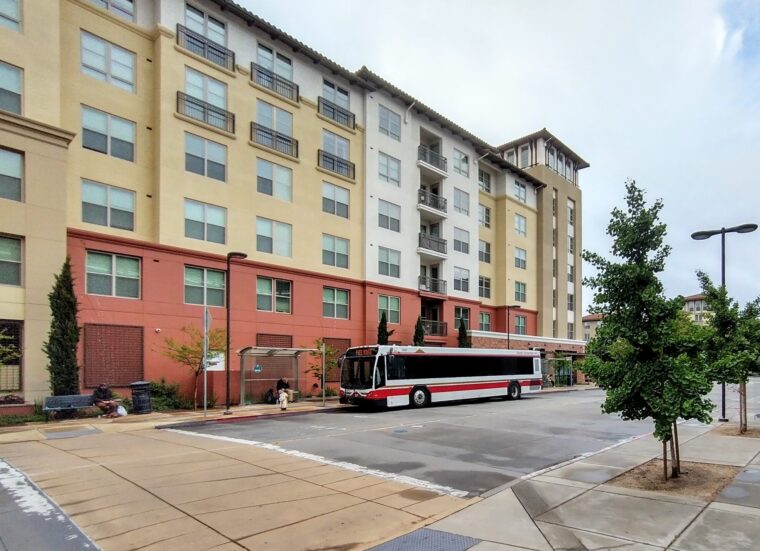
Building near bus and train stations could help address the nation’s housing shortage, but challenges like cost, availability and local opposition remain significant obstacles, transportation officials and experts said at a recent U.S. Department of Housing and Urban Development event.
Transit-oriented development projects focus on building housing and mixed-use communities near public transit stations to encourage the use of public transportation.
“The majority of an estimated 5 million shortfall of residences could be obviated by building near transit stops if developers are permitted to place enough houses, condos or apartments nearby,” said Harriet Tregoning, an adviser to the federal Department of Transportation and Maryland’s former secretary of planning, during a panel discussion on developing near bus and train hubs.
“The demand for capital to build transit is so high that the transportation agencies say, ‘We can’t fund housing because we need to pay for the transit,’” Tregoning added.
Building more housing near transit could lead to positive outcomes such as reduced stormwater runoff, as homes are typically constructed on paved land rather than undeveloped areas, fewer cars on the road and lower levels of air pollution.
Some states are working to make more transit-oriented development a reality. Massachusetts and Maryland are both embracing the move toward high-density housing built near transit lines.
Massachusetts approved the MBTA Communities Act in 2021, which requires 175 towns and cities served by Boston’s transit network to designate a portion of their territory to allow for apartments, condos, townhouses and single-family homes. These zoning districts must be no further than 0.5 miles from a commuter rail station, subway station, ferry terminal or bus station.
The Maryland Department of Transportation (MDOT) recently issued a Request for Qualifications (RFQ) for a firm to create a strategic plan to increase residential and shopping options for the Odenton MARC Station, which is one of 13 stops on the MARC Penn Line. The planned development would add more than 900 housing units.
Additionally, MDOT, in partnership with the Maryland Economic Development Corporation, is looking to build 2,600 new homes on land MDOT owns along the MARC Penn commuter rail line connecting Baltimore with Washington, D.C.
The Washington Metropolitan Area Transit Authority, which operates the subway system in Washington, could provide another 17,400 units.
Recently, Maryland passed a bill to offer affordable housing developers a 30% increase in the size of their projects if they build within three-quarters of a mile of a passenger rail station. The state also limited the ways local governments can slow or stop such projects, like requiring multiple public hearings where people can speak in opposition to the projects.
Photo courtesy Alfred Twu, CC0, via Wikimedia Commons
The post States turn to transit-oriented development to address housing shortages appeared first on Government Market News.
